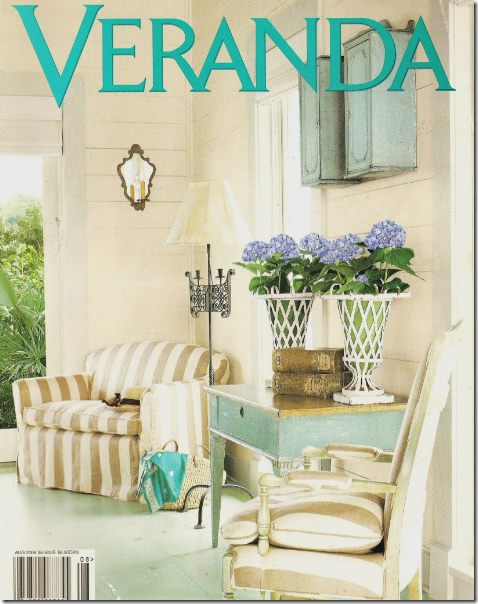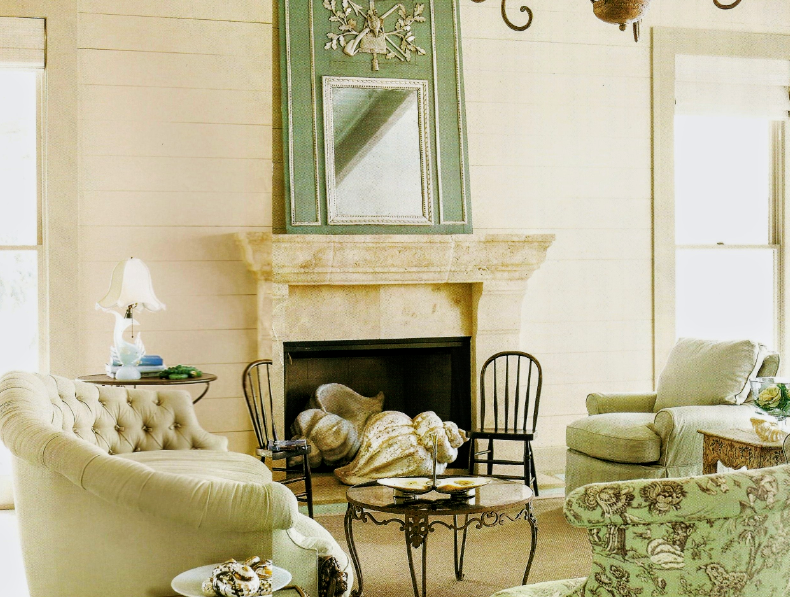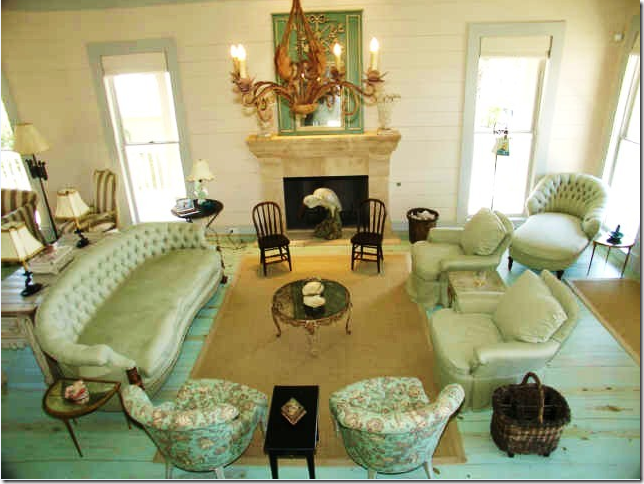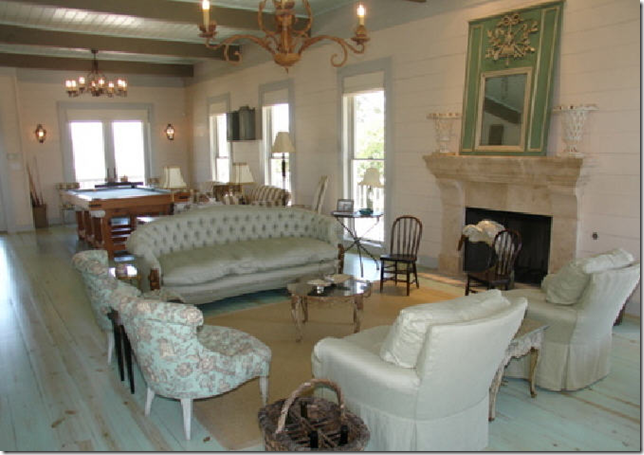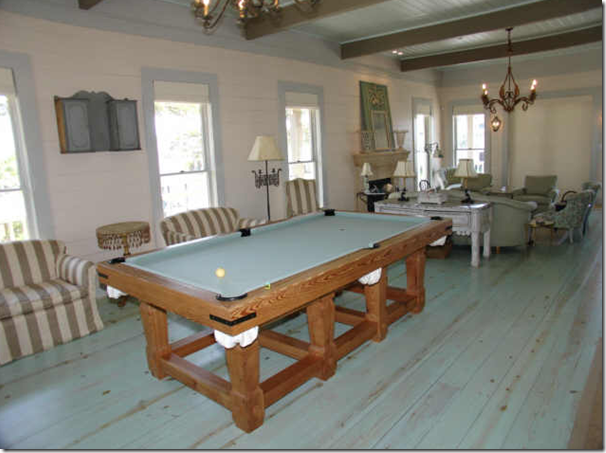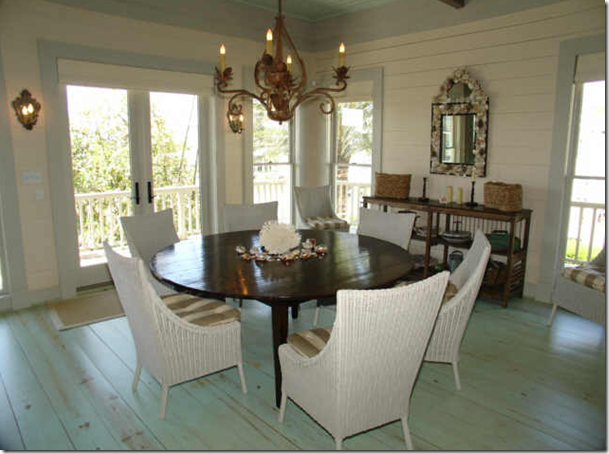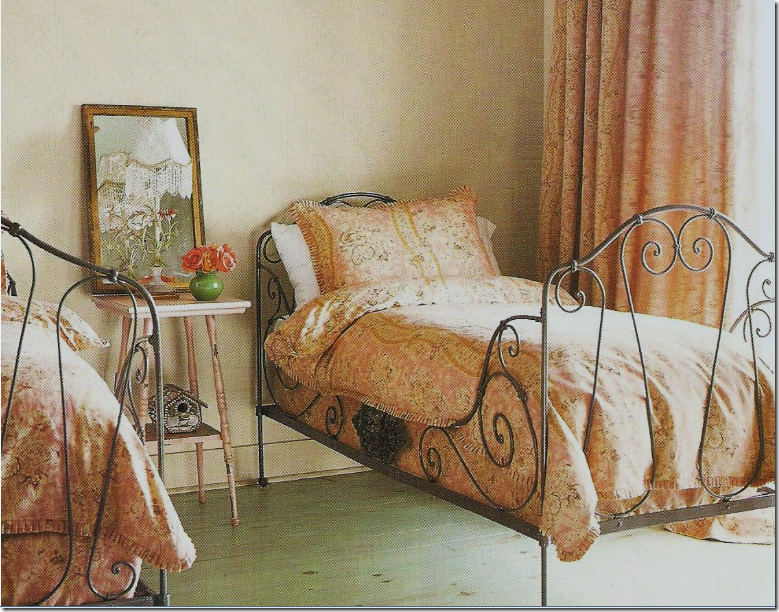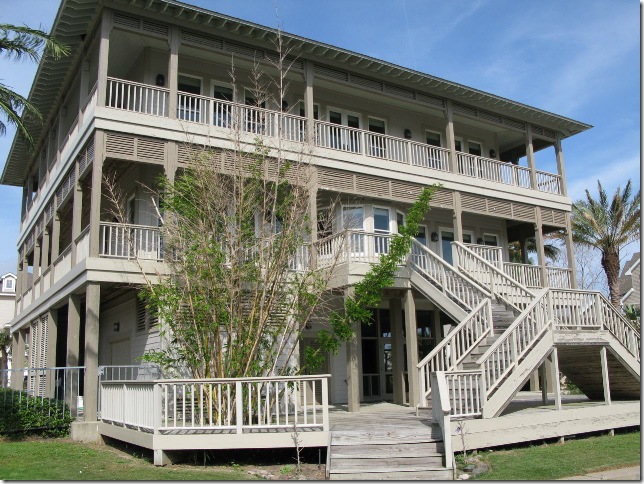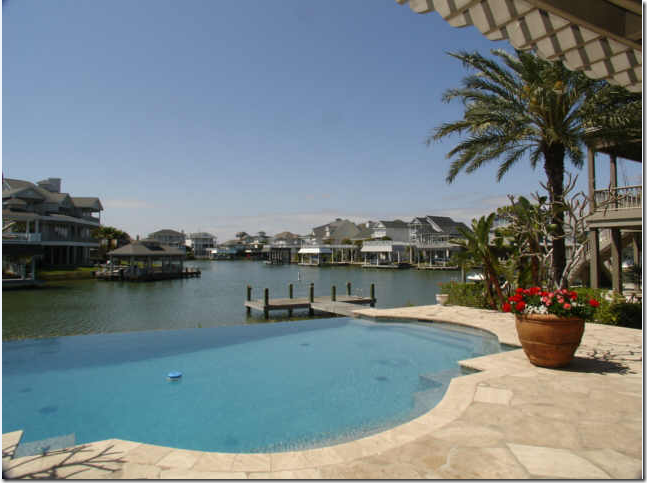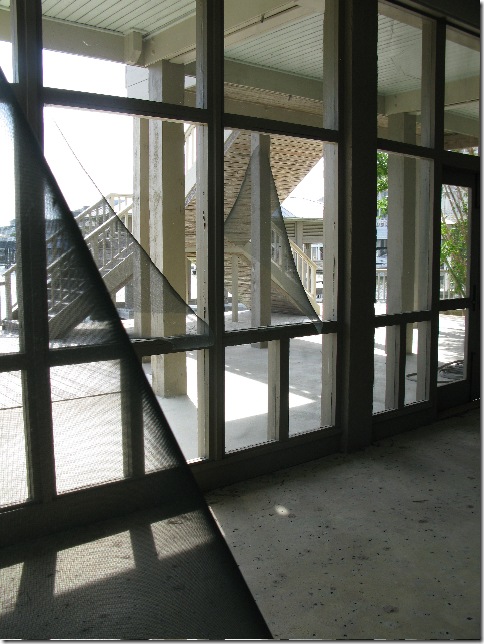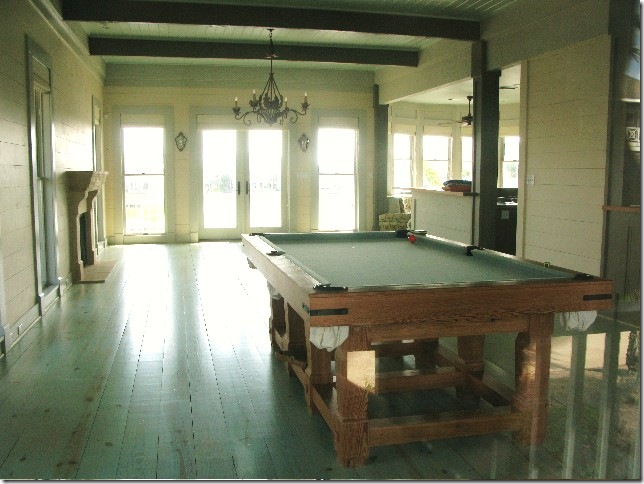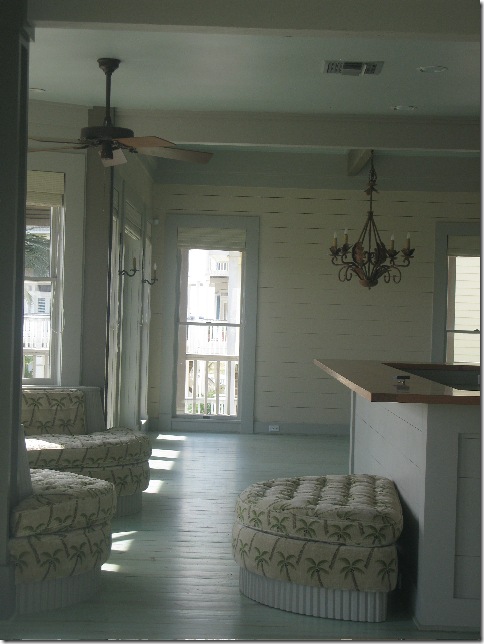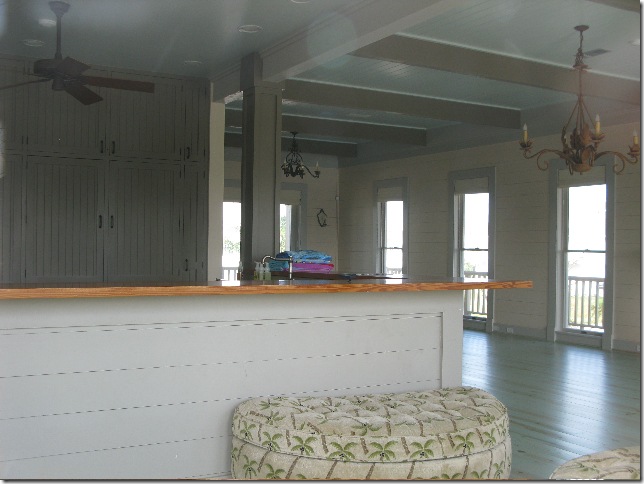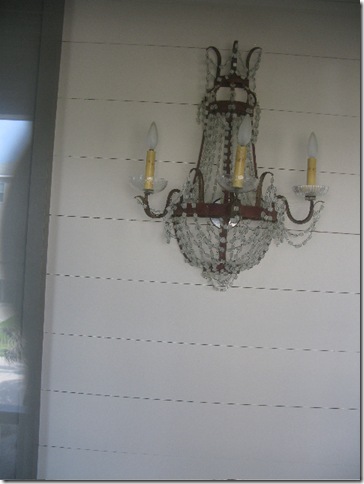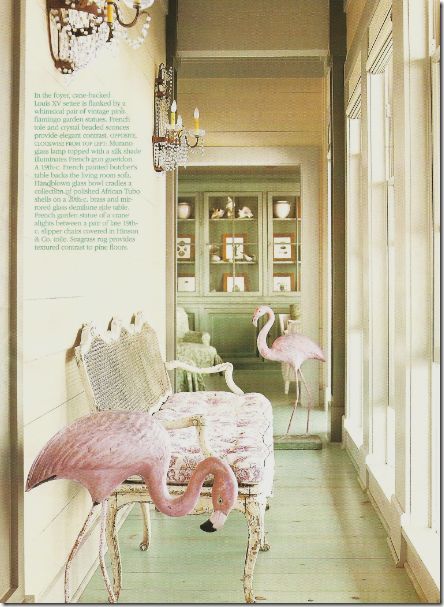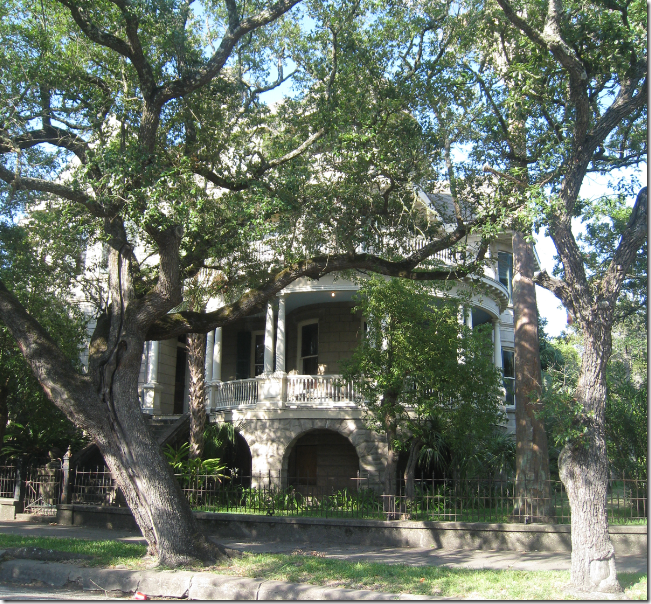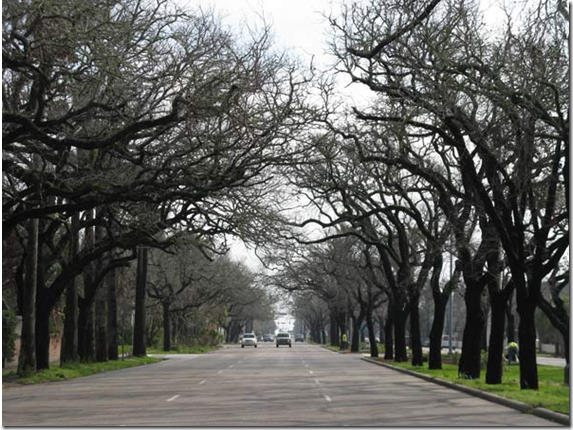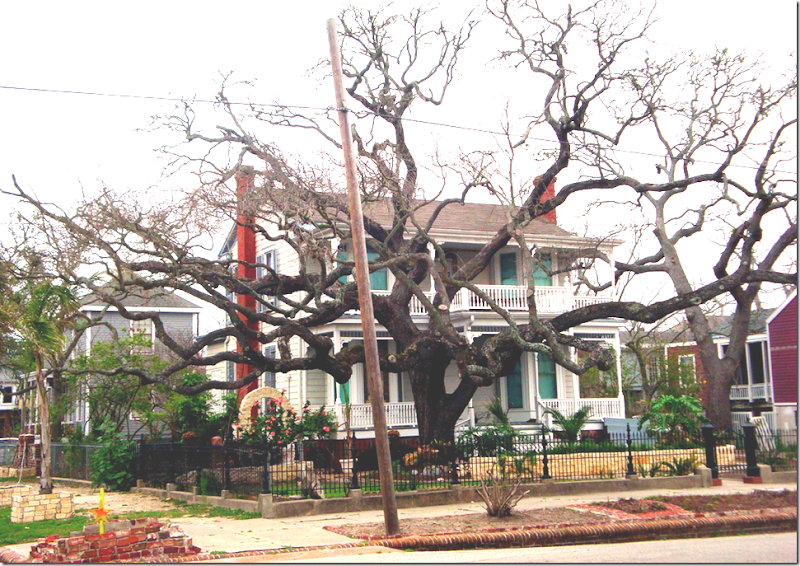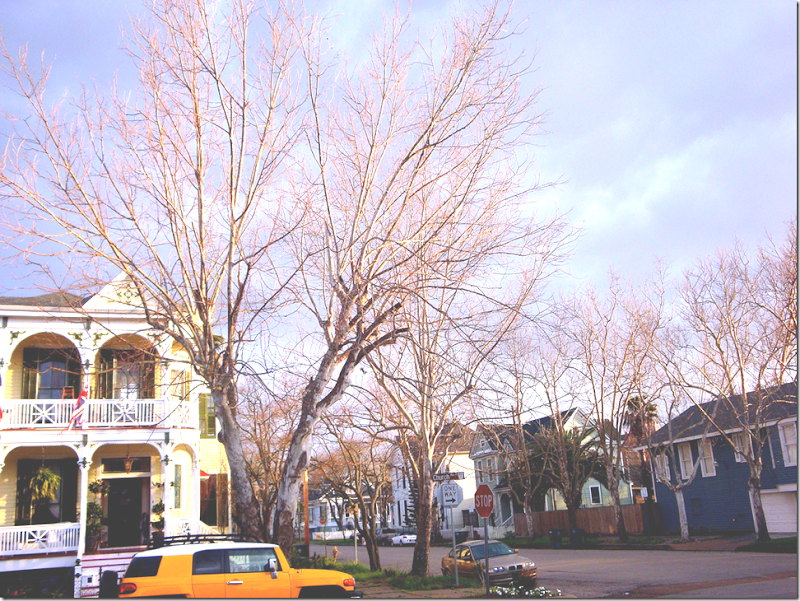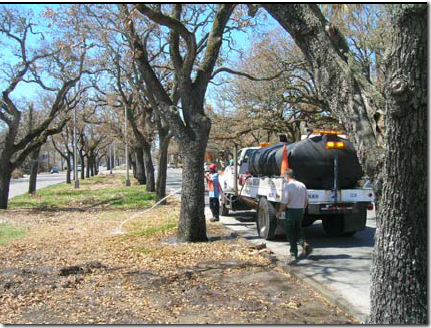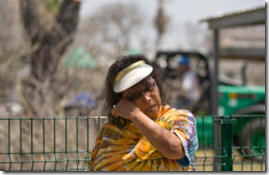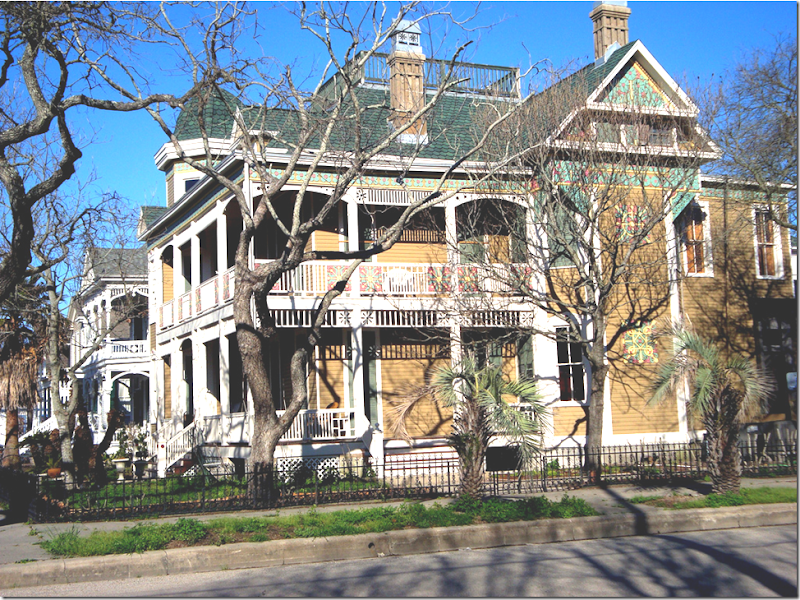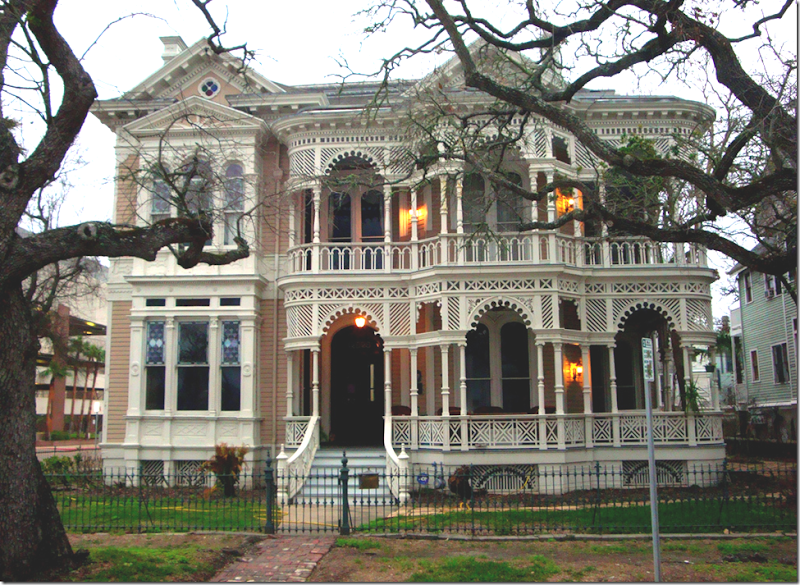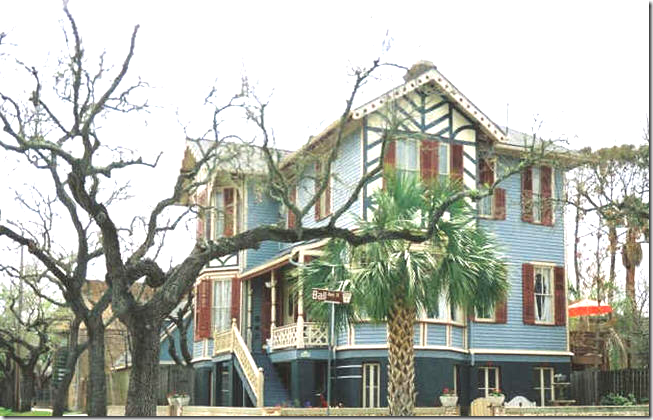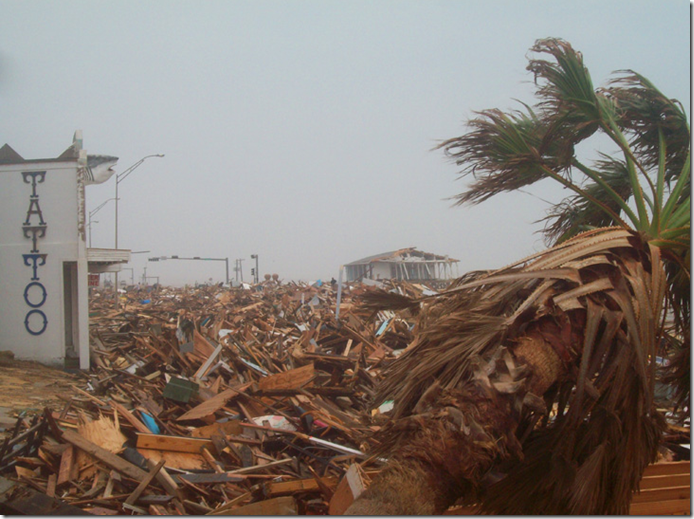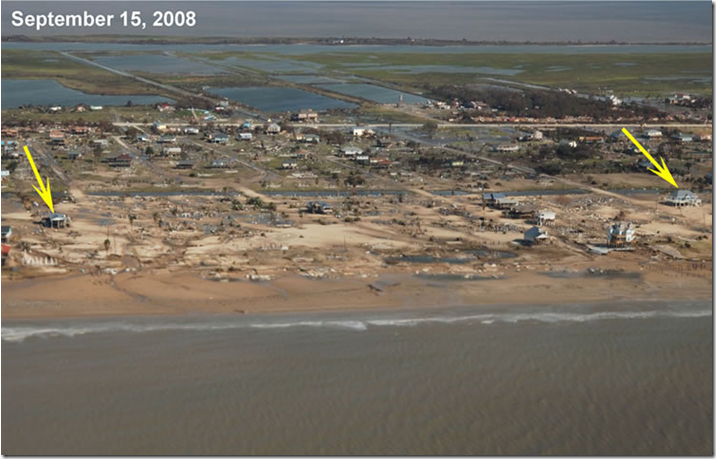Another Ike Tale: The Grey Gardens of Galveston
And now – on a much lighter note. Maybe we should call this, how the luckiest few had to deal with Ike. No, it’s not heartbreakingly sad like the Live Oak trees, or Bolivar Peninsula. And no, no one will cry over this story or should for that matter. If you did, I might have to have you committed! After all, this is just a story of an excess that most of us will never have nor would even want. But still, it might be of interest to some of you: what happens when a wonderfully designed house is no more?
A few years ago, Veranda did a cover story on a beach house in Galveston that I positively adored. It was designed by the great – the absolute greatest of all Houston designers - Ms. Babs Watkins. The house was delicious, all in aqua: aqua linens, aqua toiles, aqua ceilings and even aqua painted wood floors! Looking at the house was like looking a candy store – so delectable it was! Watkins was at the top of her game here. The job was large with six bedrooms and bathrooms and it could have turned out badly – a house done entirely in aqua? Whoever heard of such a thing? In fact, this cover story spawned a new trend in all aqua beach houses, many of which Veranda put on their summer cover, year after year. But none of the imitators could ever come close to getting it as perfect as Watkins did. Her unerring eye and knack for picking the most beautiful and desirable antiques is legendary in Houston. With Watkins’ furnishings and all the finest linens and toiles, this beach house was unlike most ever seen. It was very casual, yet in a romantic and sophisticated way – how many beach houses have French trumeaus over their antique limestone mantels? For years The Aqua House remained in my favorites file – in fact, it never left it.

So, while perusing the real estate listings last year, I almost fell over when I recognized the most perfect Aqua House was up for sale. The best part of the sale was, of course, all the new photos of the house to pore over! And even better, a Virtual Tour accompanied the listing. Nirvana. The house eventually sold – just in time for Hurricane Ike. I wonder if the new owners were able to even sleep a night in the house. It is here, today, almost a year after Ike, still languishing empty and neglected – a sort of sad, upscale Grey Gardens of Galveston. I’m not sure why it hasn’t been repaired – it all seems like minor, superficial damage, certainly nothing on a par with the slaughter of the Live Oaks going on uptown. But, still, the house has been left to the elements – something that on the beach should always be avoided. Maintenance is a must in the salt air. A loyal Cote de Texas reader happened upon the Aqua House and took new pictures for me. To read the original story of this once wonderful house, go here.
The way it was: all linen and toile in aqua, seagrass and seashells, slipcovers and trumeaus. The Babs Watkins designed house was first featured in Veranda in 2004. It had been built as a weekend retreat for a Houston family with five young children. The large family quickly sold it and then it came up for sale again last summer. The beach house was first sold fully furnished – not even one ashtray left the house – therefore, amazingly, it looked exactly the same, despite the wear and tear of four years.
From the real estate pictures - four years after Veranda’s photo shoot and another family later, the house, amazingly, looks exactly the same.
From Veranda – beautiful Hinson toile and tufted detailing. The chairs are 19th century.
Charming pompom fringe hangs over the beautifully tufted chaise in aqua linen. The walls are cream, the trim is a light aqua, the floor is pine, with a washed aqua paint.
From the Real Estate Virtual Tour – even the Crane sculpture remained through the first sale. Here you can see the custom made pool table. And notice how the ceiling is painted in the soft aqua too.
During the first sale, the entire contents of the house remained intact. During the second sale this summer, the custom made pool table, with aqua felt, was the only furniture that remained in the house. The chandeliers remained, but everything else was excluded from the sale. What a pity! In this picture you can see the taupe and cream striped fabric that Watkins used on this side of the large living room.
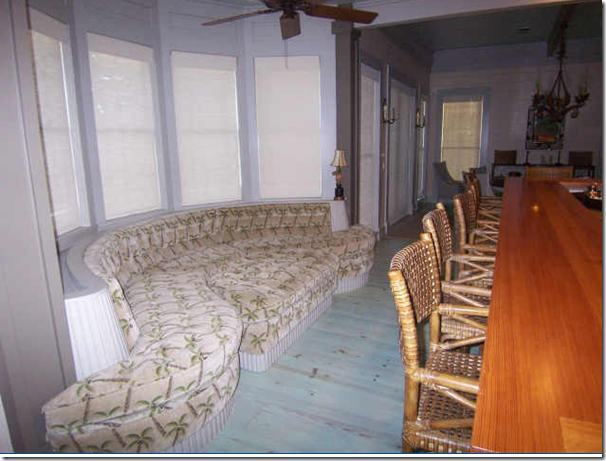 This oversized and awkward banquette with ottoman is my least favorite item in the house! The banquette, built in, of course remained in the house after the second sale. The dining room can be seen on the other side of the kitchen.
This oversized and awkward banquette with ottoman is my least favorite item in the house! The banquette, built in, of course remained in the house after the second sale. The dining room can be seen on the other side of the kitchen.
The dining room - a beautiful wood table mixed with casual yet classic Lloyd Loom chairs.
A small library off the foyer – Watkins used two main fabrics downstairs, the Hinson aqua toile and a taupe and cream stripe, both shown in this room with its wonderful cabinet filled with shells and pictures of shells.
From Veranda – my favorite bedroom, though even that choice is hard, there are so many adorable bedrooms in the house! Here are twin French iron beds with a peach linen toile and matching curtains. Notice the mini pleat edge on the duvet and shams.
Last summer, the house was perfectly manicured and freshly painted.
The beach house is actually on the bay side, facing a canal. It stretches over three lots – one lot is the pool house pictured here. So, what does the house look like today – almost a year after Ike? The neighborhood received some damage – many houses’ ground floors were heavily damaged. Yet, life in this very exclusive neighborhood has gone on. There is a lot of building activity happening there now. A Cote de Texas reader visited the still empty Aqua House and snapped these pictures:
Today. The owl which is used to scare away seagulls with their mess is barely scaring anything today. The landscaping looks bare but it does appear someone has top pruned, always a no-no.
Whoa. The front side of the house with the pool house on the left. What a difference a year makes. Besides the green palm trees, it looks like a desolate moonscape.
The back side of the house, empty and lonely looking.
The pool house and the infinity edge pool, green instead of blue.
I wonder what the neighbors think? I’m surprised the homeowner association hasn’t stepped in.
How it was last summer – the infinity edge pool overlooks the canal that leads out to Galveston Bay. The house comes with a boat dock, of course, just barely visible at the very right of the picture.
Now: the screens are all falling off the ground floor porch.
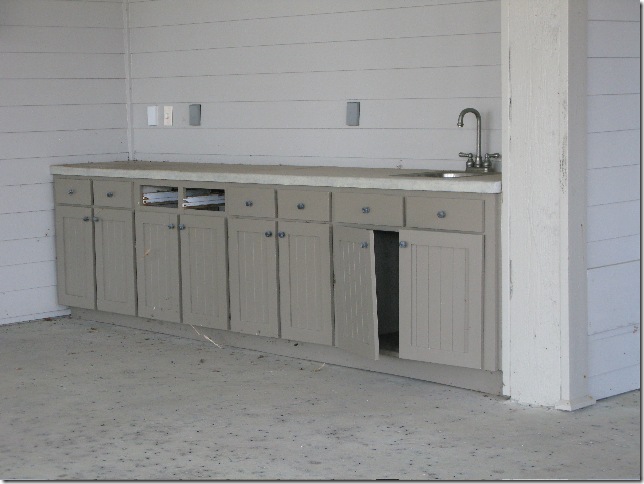 Now: the pool house drawers blew away in the storm.
Now: the pool house drawers blew away in the storm.
The pool house – how it was last summer. Notice how fabulous the bench is, a painted French antique that would be at home in the finest mansion, much less a pool house!
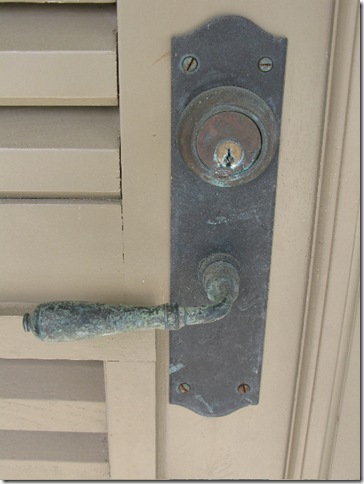 Now: all the beautiful hardware, neglected and left to the elements, is corroding.
Now: all the beautiful hardware, neglected and left to the elements, is corroding.
Today, all that remains of Watkins fabulous interior – a chandelier, the sconces found throughout the downstairs living area, and the custom pool table. What a shame that Watkins wonderful design is now dismantled! I wonder where all those antiques went? Seems such a shame to break it all up. I’m sure the former owners would disagree with me – but I’m speaking strictly as a great fan of Watkins work.
The banquette and ottoman remained – my least favorite part! And the dining room chandelier stayed.
Looking back towards the empty living room and kitchen. I wonder if the new owner will keep the aqua floors, trim and ceiling?
Today: a shot from outside looking into the foyer – the photographer didn’t go inside the house of course! The sconce, with the bulbs in place, seems so Grey Gardens.
Then: the charming foyer – as Watkins designed it. The antique crystal sconces juxtaposed with fun vintage pink flamencos. This painted French caned bench sports a pink and white toile. A view into the small library, shown before. Just beautiful! I love this house – I can’t help it, I just love this house!!!!
Watkins took so much care to pick out each fixture. The lanterns, once in a wonderful green, are now all rusted and trashed out looking. I wonder what she would think?
The Aqua House makes me think of all the other wonderfully designed houses that sell, how the design is broken up and destroyed forever – with only photographs left to memorialize them. Do you know of a house you once loved that is no longer the same? Sally Quinn felt that way about Grey Gardens. She loved the house it once was so much that she resurrected it. To read my story of Sally’s work, go here. I wonder if the Aqua House will find a Sally Quinn?















